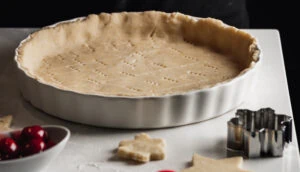To create the perfect cup of coffee, one of the most important elements is fresh, clean water. Our tap water consists of minerals and deposits which can lead to a poor tasting cup of coffee and can also impact the performance of your Breville coffee machine.
If your Breville coffee maker clogs up from time to time, or you notice a white-colored buildup forming, a deep cleaning might not do the trick. You need to descale the machine so in this article, we will show you several ways to maintain your machine to keep it in top working condition.
In this guide we will suggest the best cleaning agents for coffee makers (most you can prepare yourself with ingredients found around the house!), we will break down the descaling process, and give a few signs that you need to look out for to see when descaling is required.
Signs You Need to Descale Your Breville Coffee Maker
- Water/Coffee flow isn’t smooth when your machine is in use
- Your machine is equipped with a “descale” indicator light
- You notice a white-colored buildup in your machine
- You know you have hard water
More about hard water: Hard water contains many minerals including magnesium and calcium. An easy way to check if your home has a hard water supply is to look for white residue left behind around the drain in the sink, or a buildup around the faucets or in the dishwasher.
While hard water isn’t dangerous, it requires special cleaning to make sure the buildup does not restrict proper flow, especially in a kitchen appliance like a coffee maker.
Unfortunately, using a regular dishwashing soap will not work for descaling.
How to Descale Breville Espresso Machine or Coffee Maker
Whether you own a Breville Precision Brewer, Breville espresso machine, Breville Barista Pro, or a Breville Barista Express, descaling the coffee maker is an important step to maintaining your machine and keeping it brewing your favorite coffee beverage for years to come. Descaling can be done with the help of several solutions.
Breville Descaling Solution
A ready-made descaling solution is great for people who don’t want to spend time preparing their own, plus results are guaranteed.
- Prepare descale solution in accordance with manufacturer’s instructions. Pour this solution into the empty water tank.
- Place the basket and the carafe into position under the drip stop outlet (Ensure the carafe is empty and the lid is securely locked).
- Press SELECT button for 3 seconds to start descaling cycle. When the descaling process is finished, the LCD screen will go back to the main menu.
- To completely remove residual water in the tank, brew with fresh filtered water twice.
- Wash the carafe, drip tray, steam wand, and filter with warm soapy hot water before brewing a pot of coffee.
White Vinegar Solution
You can use white vinegar found in your kitchen to descale your coffee maker as well. This is an affordable, yet effective option.
- Switch off the power to the coffee maker. Add white vinegar in the water reservoir until half full. Add water, filling to the max fill line.
- Leave the solution inside the machine for an hour, allowing all the deposits and minerals to break down.
- Turn on the machine, and brew it once with the vinegar solution just like you would make coffee. As the machine runs it will descale and the buildup will settle in the carafe.
- Repeat process if needed.
- Run a brew cycle or two with clean water to remove the smell of the vinegar.
- Wash the carafe, drip tray, and filter with warm soapy water before brewing a pot of coffee.
Citric Acid
While citric acid is not as strong as white vinegar, it is still a preferred option for many because of its pleasant fragrance.
- First, dilute and dissolve a tablespoon of citric acid pellets in a gallon of water.
- Pour the solution into the machine’s reservoir and allow it to sit for about an hour.
- Run the machine to begin descaling until the solution settles in the carafe.
- Go for round two if you feel it could still need some descaling.
- Add plain water to the reservoir and brew the water to get rid of the smell of the citric acid.
- Wash the carafe, drip tray, and filter with warm soapy water before brewing a pot of coffee.
Baking Soda
Not as effective as the other options listed above, baking soda is still considered to be a good cleaning agent. It is powerful enough to remove buildup.
- Create a mixture of a teaspoon of baking soda with a liter of warm water. Do not use cold water because the baking soda won’t dissolve properly.
- Pour the mixture into the coffee maker’s reservoir and let it sit for about an hour.
- Press the brew button for the cycle to begin.
- You can repeat this until all the buildup has settled into the carafe.
- Run a brew cycle or two with clean water until the water runs clear into the carafe.
- Wash the carafe, drip tray, and filter with warm soapy water before brewing a pot of coffee.
The best part about using baking soda is that it is unscented.
Lemon Juice
Many people use lemon juice because of its acidic properties and because of the fresh fragrance it leaves.
- Create a solution of one part lemon juice with two parts water.
- Add it to the reservoir and allow it to sit for an hour.
- Press the brew button, and the descaling should begin.
- Repeat the cycle if you feel it has not descaled properly.
- Run another cycle with clean water to flush out any lemony residue so not to alter the flavor of your coffee.
- Wash the carafe, drip tray, and filter with warm soapy water before brewing a pot of coffee.
Using Spring or Bottled Water
While cleaning agents work well to descale your Breville machine, prevention is the best strategy. Using bottled or spring water greatly reduces the opportunity for mineral deposits to form in the coffee maker. These sources of water don’t cause much buildup. While they may be more expensive, they are still more cost-effective in the long run keeping your machine in prime condition.











